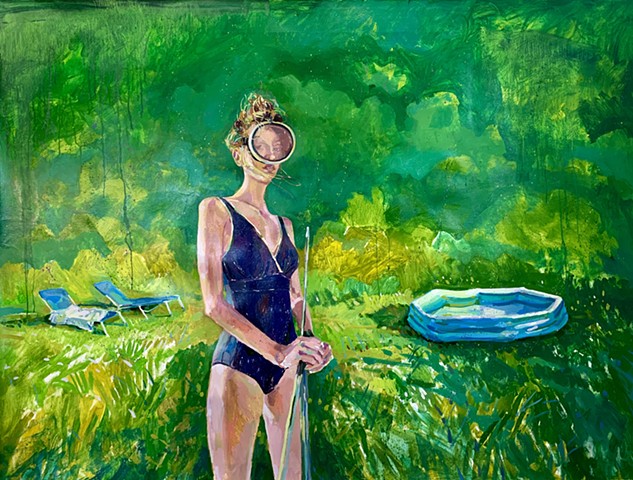Robert Sparrow Jones, Artist Statement
Growing up in a small valley town, I spent my days in the woods among deciduous trees, waves of fern, cold lakes and meandering rivers. I developed a deep relationship between natural form and human design and built tree-forts out of the salvaged windows of old Victorian houses that were being stripped down. High in a treetop offered a place of safety. It was forbidding and fragile, offering oppositions that were the necessary thread of all my work to come—my paintings a continuation of a Thoreauvian attempt to coexist with nature. Below my tree-fort, the very landscape of Northeastern PA was slowly strip-mined to a fine silt. Though this did excavate fossils and contemporary artifacts, it turned your socks black in the rain and I was perplexed by the acres of wildlife rendered to a vapid dark desert. What ensued was an entropic landscape of devastated metaphors and the very dilemma of our modern existence. My fascination with the natural world, which seems at once delicate and enduring, forlornly strange and intimately known, is an obvious response to, and escape from, our hypercivilized, technology-saturated, globalized world.
My father was an English teacher and I was surrounded by books. My passion for the narrative was fueled by their content. Tree-houses and boats are structures attuned to boyhood memories. Immersed in nature, though perilous, they remain a meditative place. I believe possibilities and contradictions should always exist together; imagination is irrational and the places between the bucolic and the cosmopolitan, where the new and the old world overlap, construct its contemporary mysteries. This connected with my childhood, of being in the woods and the conscious search for a dialogue between strength and fragility. In my oil paintings I utilize heightened color to weight the image into something other than reality, which engages the perfect tension of psychology and emotional indifference. I want the viewer to never forget the communal wild, that which we share with nature. My landscapes and waterscapes embody many passages of time by fusing separate layers of color to let light pass through. They imply planes of flux where more rendered areas fuse a temporary suspension from the movement. An overwhelming sense of movement and a deep feeling of continuous space are discovered through transparent washes. They are experienced as if growing into existence like the seasons of a forest or the waves of the sea. What we are confronted with is human complexity and contradiction while subtly aiming at global environmental issues. Our wild natural world inherently remains feral inside us all.
